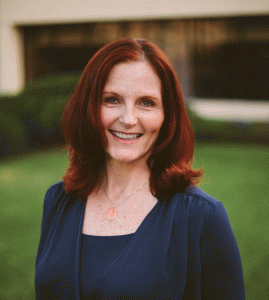
Jodi Hill
By Jodi Hill
Working in higher education marketing and teaching millennial graduate students, I’ve learned a bit about how to speak to, work with and market to millennials, those born between 1980 and 1994. Now we’re also faced with Gen Z, who are starting to enter the workforce. Born after 1995, this generation is considered the “neo-digital natives.”
A common misconception of millennials is that they are lazy and not driven by a strong work ethic. They just don’t want to work the way older generations do. They see beyond doing things because “that’s the way we’ve always done it.” While we may have been taught to work through lunch and stay later than our supervisor to get it all done and make a good impression, millennials, given their strengths in everything digital, complete their work in the most efficient way possible, giving them time for lunch or a workout away from their desk. You might say that this generation believes in living life, versus finding a work-life balance.
Millennials want to feel connected and involved with their purchases, and traditional out-bound marketing practices don’t fulfill this need. Magazine ads, direct mail, radio and even television ads do not impress them. The constant digital connectivity of this generation allows marketers to use the growing options within social media to reach them where they spend most of their time. Facebook, Instagram and even LinkedIn provide great opportunities to target this audience based on their buying behaviors and interests. Facebook and Instagram also allow for look-a-like targeting, which determines which users will be exposed to your ad using a source audience — an uploaded list of your current customer email addresses. You can use the list to specifically target those past customers, as well as use Facebook’s algorithm to find people who “look like” them.
In terms of messaging, millennials crave content-driven media, and trust relevant, authentic opinions from real product users.
Google remains a necessary part of the digital marketing mix to rise above the clutter and noise of competitors, and it’s important to explore the geo-targeting nature of the platform if you are a small business or one localized to specific regional areas. In many cases, you don’t need to spend a lot in search pay-per-click advertising to gain maximum exposure if the right strategy is in place.
The neo-digital natives, those born between 1995 and 2012, have never known anything other than omnipresent connectivity, global access, on-demand video and news and social interaction 24/7. While we used to think millennials were social-media obsessed, this generation is taking it to a new level. Millennials primarily use social media to update their statuses and follow what their friends are up to. However, Gen Z tends to want to be entertained by interesting and fun content rather than by what their friends are doing.
Brand-marketing interruptions may not be well-tolerated by Gen Z, so it’s important to capture this audience’s attention quickly, in an entertaining way. In six seconds or less, you will either connect with them or lose them, which requires thinking more about the delivery of the content, rather than just the content itself. Quick and relevant video clips that create a compelling reason to seek more information are becoming a key tactic. Multi-channel social strategies are still important in the marketing plan, with a heavy focus on Instagram and Snapchat, but the growing preference with this audience is video and, therefore not surprisingly, your YouTube channel.
Today’s kindergarteners are at the top of the next defined generation – the Alphas. I wonder what new technologies and channels will shape them. Artificial Intelligence, robots, brain-computer interfaces. The possibilities and marketing challenges are endless.
There will always be a hot new trend, app or social media channel that each generation latches on to in different ways. While we as marketers cannot be on all channels all the time, we need to stay on top of the data and trends in order to ensure our marketing dollars and energies are properly placed.
• Jodi Hill is director of marketing at the Pepperdine School of Law and an adjunct faculty member in the California Lutheran University School of Management.






 Print
Print Email
Email

















